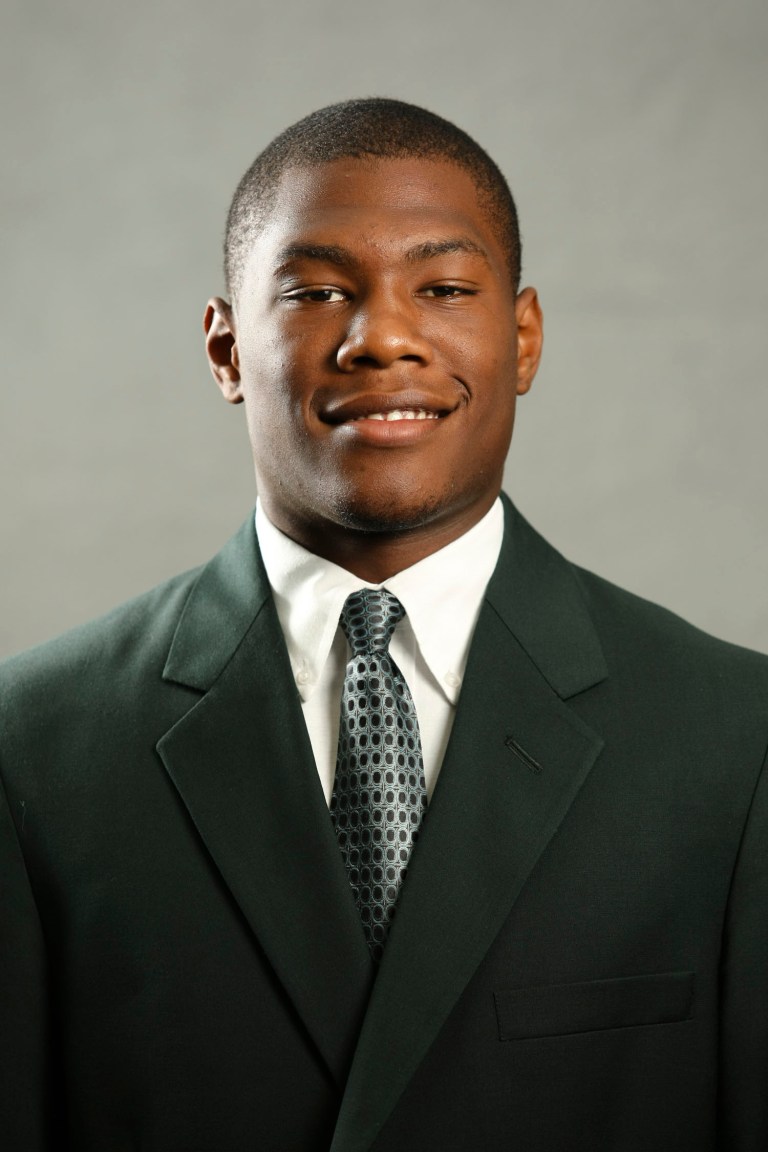The following is the third of five installments of The Stanford Daily’s “Meet the Spartans” series, which will give an in-depth look at Michigan State leading into the 100th Rose Bowl Game between No. 4 Michigan State and No. 5 Stanford on Jan. 1. Today’s piece will focus on the Spartans’ running game. Come back to stanforddaily.com/category/sports for the next two days for looks at the Spartans’ pass offense and special teams.
The low-down: If the green and white uniforms weren’t such a dead giveaway, the Spartans’ rushing attack might cause fans that are familiar with Stanford’s power running game to do a double-take when Michigan State’s offense takes the field. There is very little deception when Sparty runs the football. In the era of spread schemes Michigan State prefers to manhandle opponents at the line of scrimmage and run between the tackles, an approach that accounts for the majority of the team’s 2,368 rushing yards on the season.

Best player: This is an easy one. Running back Jeremy Langford has been the Spartans’ go-to guy on the ground this season, amassing 1,338 yards on 269 carries. For comparison, Michigan State’s second leading rusher, Nick Hill, has only carried the ball 67 times for 344 yards. Before he burst onto the scene in 2013, the 6-foot, 206 pound redshirt junior had only carried the ball nine times for 23 yards while backing up current Pittsburgh Steelers starter Le’Veon Bell. Much like the Cardinal’s Tyler Gaffney, Langford has emerged as the workhorse for a running game that was filled with uncertainty entering this season.
Best performance: While arguably Michigan State’s worst defensive performance, the Spartans’ 41-28 win over Nebraska on Nov. provided a platform for Sparty’s rushing attack to flex its muscles. Langford led the way with career-high numbers in every major statistical category, finishing with 32 carries for 151 yards and three touchdowns, including a career-long. 37-yard, bulldozing run that sealed the game in the fourth quarter. A runner-up candidate for best performance would be Michigan State’s 55-17 trouncing of FCS opponent Youngstown State, against whom the Spartans gained a gaudy 277 yards on the ground.
Worst performance: Not coincidentally, the Spartans’ worst rushing performance came in their only loss: to Notre Dame on Sept. 21. Langford recorded just 68 yards on 14 carries while Hill only managed 34 yards on 13 carries. The loss to Irish also marked one of the three total games all season in which Michigan State failed to score a rushing touchdown.
Highlight of the season: Throughout the year, Langford showed a penchant for scoring touchdowns late in games to seal the deal; however, none of his other late-game heroics quite live up to this 26-yard scamper to put away the previously undefeated Ohio State Buckeyes in the Big Ten Championship Game.
Biggest questions: Michigan State loves to run the ball early and often, but it ran into a lot of trouble when it matched up with an elite rush defense in Notre Dame. Will the Spartans offensive line be able to prevent an elite defense from consistently causing trouble in the backfield? Can Langford rise to the next level and churn out runs in the absence of large holes? Those are questions that Sparty might have to answer when it takes on an elite rush defense in Stanford.
Matchup with Stanford: Outside of a two-week stretch in which it gave up 125 yards to Washington’s Bishop Sankey and 111 yards to Utah’s Bubba Poole, the Cardinal defense has been very effective at stopping the run, allowing an average of just 3.0 yards per carry. Defensive linemen David Parry, Josh Mauro and Henry Anderson have the ability to consistently get into the backfield and make plays while inside linebackers A.J. Tarpley and Shayne Skov, with 187 combined tackles, thrive at stopping “pro-style” running attacks. Although many teams have struggled to establish a running game against Stanford, the success of Sankey and Poole against the Cardinal should give Langford and the Spartans some confidence that a talented back can find success. Ultimately, the matchup between Stanford’s defense and Michigan State’s rush offense comes down to a battle of strengths for each team, and the dominant side will have a strong influence on the final score of the 100th Rose Bowl Game.
Contact Vihan Lakshman at vihan ‘at’ stanford.edu.
